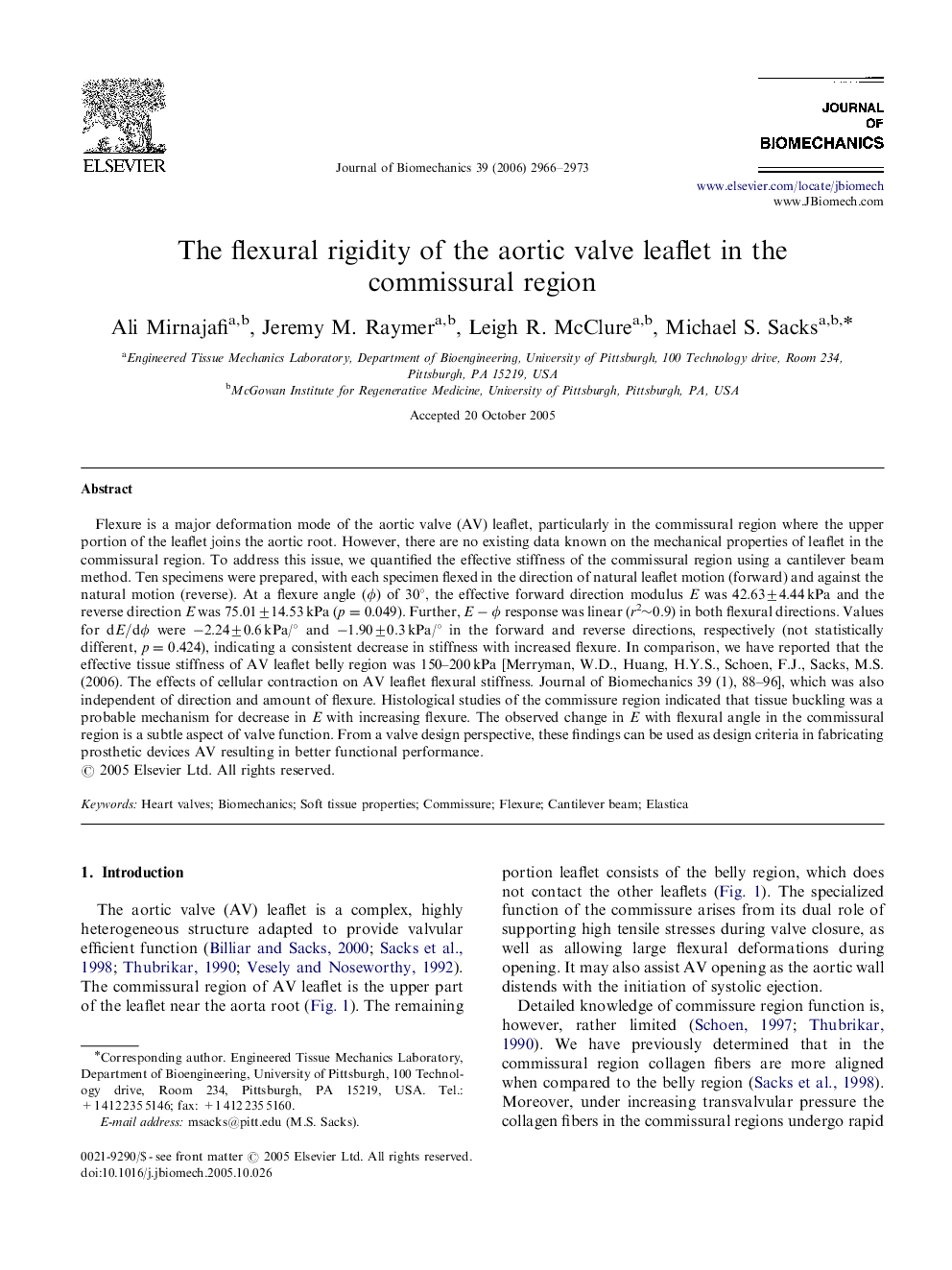| Article ID | Journal | Published Year | Pages | File Type |
|---|---|---|---|---|
| 874479 | Journal of Biomechanics | 2006 | 8 Pages |
Flexure is a major deformation mode of the aortic valve (AV) leaflet, particularly in the commissural region where the upper portion of the leaflet joins the aortic root. However, there are no existing data known on the mechanical properties of leaflet in the commissural region. To address this issue, we quantified the effective stiffness of the commissural region using a cantilever beam method. Ten specimens were prepared, with each specimen flexed in the direction of natural leaflet motion (forward) and against the natural motion (reverse). At a flexure angle (φ) of 30°, the effective forward direction modulus E was 42.63±4.44 kPa and the reverse direction E was 75.01±14.53 kPa (p =0.049). Further, E-φE-φ response was linear (r2∼0.9) in both flexural directions. Values for dE/dφdE/dφ were −2.24±0.6 kPa/° and −1.90±0.3 kPa/° in the forward and reverse directions, respectively (not statistically different, p=0.424), indicating a consistent decrease in stiffness with increased flexure. In comparison, we have reported that the effective tissue stiffness of AV leaflet belly region was 150–200 kPa [Merryman, W.D., Huang, H.Y.S., Schoen, F.J., Sacks, M.S. (2006). The effects of cellular contraction on AV leaflet flexural stiffness. Journal of Biomechanics 39 (1), 88–96], which was also independent of direction and amount of flexure. Histological studies of the commissure region indicated that tissue buckling was a probable mechanism for decrease in E with increasing flexure. The observed change in E with flexural angle in the commissural region is a subtle aspect of valve function. From a valve design perspective, these findings can be used as design criteria in fabricating prosthetic devices AV resulting in better functional performance.
